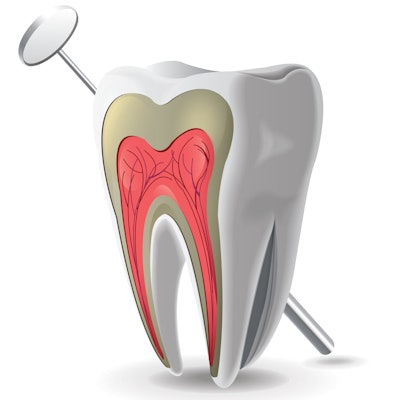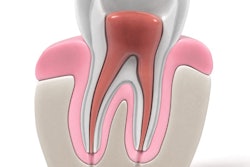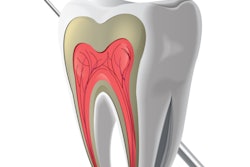
While there's no doubt sealers play an important role in preventing root canal failure, does a product's bond strength change when ultrasonically activated? Where are sealers most likely to fail? Researchers from Turkey looked at these questions in a new study in BMC Oral Health.
Three epoxy resin-based sealers -- AH Plus (Dentsply Maillefer), Acroseal (Septodont), and Adseal (Meta Biomed) -- were tested with the idea that there would be no difference between the sealers, at least in terms of bond strength to the root dentin.
"There are not enough sources in the literature for validating this data, so the effect of ultrasonic activation of the epoxy resin-based sealers on the push-out bond strength is unknown," wrote the authors, led by Fatih Cakici, PhD, from the Ordu University Faculty of Dentistry (BMC Oral Health, September 30, 2016).
Bond strength
“The effect of ultrasonic activation of the epoxy resin-based sealers on the push-out bond strength is unknown.”
After a root canal, sealers are used to prevent colonization and reinfection in the root canal and periapical tissues. While previous studies have looked at various irrigation techniques and ultrasonic systems, the researchers wanted to see if ultrasonic activation of a sealer had an effect on its bond strength.
The researchers used 36 single-rooted, mandibular premolar teeth, divided into three even groups. Only oval-shaped root canals were used in the study. For each group, an ultrasonic tip (size 15, 0.02 taper) coated with one of the epoxy resin-based sealers was used. The tip was placed 2 mm shorter than the working length and the sealer was activated for 10 seconds. The researchers used a push-out test to measure the bond strength between the root canal dentine and the sealer and the Kruskal-Wallis test to evaluate the push-out bond strength of epoxy-based sealer.
For Adseal, the highest failure rate was seen in the coronal area because of failure of the mix. For Acroseal, the mix in the middle area showed the highest failure rate. AH Plus, however, had the highest failure rate because of the mix in the apical area. The data are shown in the table below.
| Frequency analysis for failure type | ||||
| Area | Failure type | Adseal | Acroseal | AH Plus |
| Frequency (%) | ||||
| Apical | Adhesive | 1 (2.78) | 1 (2.78) | 2 (5.56) |
| Cohesive | 5 (13.89) | 3 (8.33) | 3 (8.33) | |
| Mix | 6 (16.67) | 8 (22.22) | 7 (19.46) | |
| Middle | Adhesive | 1 (2.78) | 1 (2.78) | 1 (2.78) |
| Cohesive | 8 (22.22) | 2 (5.56) | 6 (16.67) | |
| Mix | 3 (8.33) | 9 (25.02) | 5 (13.89) | |
| Coronal | Adhesive | 0 (0) | -- | 2 (5.56) |
| Cohesive | 3 (8.33) | 3 (8.33) | 4 (11.12) | |
| Mix | 9 (25.02) | 7 (19.46) | 6 (16.67) | |
The highest push-out bond strength was found in the apical section, compared with the middle and coronal sections, the authors reported. Because the taper of the master apical file is 0.06 and the taper of the ultrasonic tip is 0.02, the distance between the dentin wall and ultrasonic tip in the apical section is shorter than in the middle and coronal sections of the root. The authors speculated that ultrasonic activation may be more effective in the apical section.
Lack of literature
The study authors noted that a 2011 study in the Journal of Endodontics reported no statistical differences in terms of adaptation, percentage of voids, solubility, and flow among the three sealers used in this study, but a significant increase in penetration for AH Plus and Acroseal was noted at the 4-mm depth of the opening when activated ultrasonically in a 2014 study.
However, the authors of the current study stated that there are no available data about this particular issue in the literature, which makes it difficult to compare findings with other studies. More research is necessary, they wrote.
"Apical sections for all groups have higher push-out bond strength values than middle and coronal sections," the authors concluded.



















